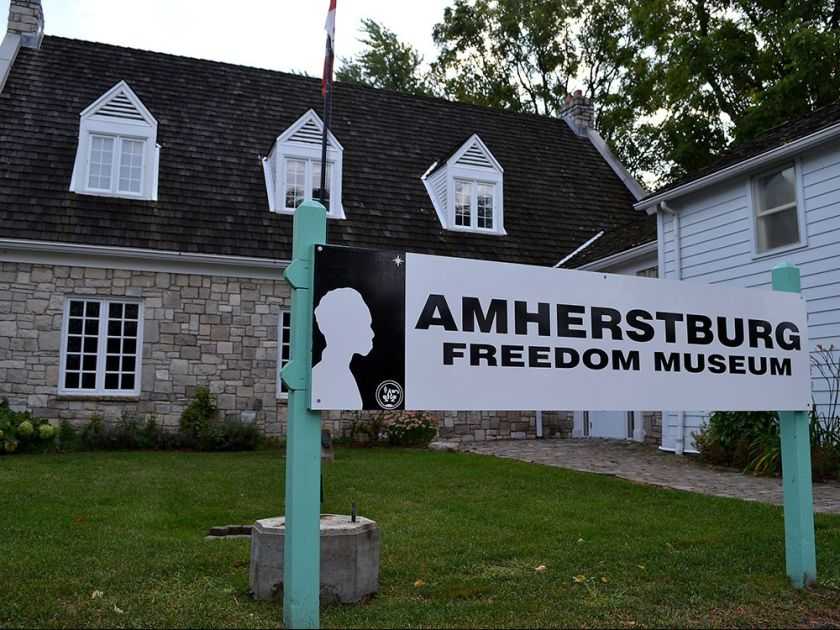on
BY: SIMONE JENNIFER SMITH
Many of us are unaware of the rich African history that can be found in Essex County, which is located in South-Western Ontario. It is not by any fault of ours, it is because to be honest, it is not taught to us in school. Most of the African history that we hear comes from our neighbouring country America, and as significant as that history is, Canadians of African descent have played important roles in the cultural, political, social, and economic progress of our communities right here in Ontario. By the 18th century, black loyalists, and other enslaved Africans had begun to settle in Essex County. By the 19th century, formerly enslaved African Americans had saturated the area, most fleeing either bondage or oppression; in more modern times, immigrants from the continent of Africa and the Caribbean made this region their new home.
One particular city in Essex County carries a history that remains unknown to Canadians; this city is called Amherstburg, and it is located about three hours outside of Toronto, Ontario. Amherstburg played a paramount role in the Underground Railroad; it is located by the narrowest part of the river, which made it one of the easiest points of entry for runaway slaves. Another key aspect about this area is the fact that there are many islands located between Detroit and Amherstburg, which gave African slaves hiding places during their daring escapes. There are many historical sites in Amherstburg, but one site has managed to accumulate all of the histories of the region into one place; let’s take a quick journey through Amherstburg Freedom Museum.
Over 30,000 people came through the Underground Railroad to Canada, and the Amherstburg Freedom Museum was a chief entry point into Canada for those escaping slavery. When driving through the city, and up to the museum, there is an energy that is indescribable. The museum tells the story of African-Canadians journey and contributions. Amherstburg resident Melvin “Mac” Simpson founded the museum and his belief was that social, economic and educational issues would be better addressed by a society who had greater knowledge and pride in their own history. Contrary to popular belief, there was a lot of racism and segregation in Canada, and many don’t realize that slavery was a reality for many African-Canadians during the 18th century; Mr. Simpson saw the importance of doing something tangible to increase black awareness, and to help future generations understand that life was not easy for runaway slaves, but many lived through it with dignity, strength, and purpose. He realized that creating this space would help preserve the many stories that would otherwise go untold and passing artifacts down for future generations would assist in education and inspiration.
Amherstburg First Baptist Church is the Mother Church of Amherstburg, and it played a crucial role in the development of black communities and their identity in Ontario. The church assisted in founding organizations where people of African descent could pursue their ambitions, develop their talents, and assume positions of leadership at a time when many Africans were denied these opportunities elsewhere. The church is set on a small, flat lot and features a gable roof, pointed arch windows, and gabled vestibule. Built in 1848, the church offered a fitting spiritual home for thousands of black Baptists and it was important in the everyday lives of congregants to help establish distinctive black Baptist traditions here in Ontario.
In 1966, the pastor, Mr. Simpson and members of the church – which is now called the Nazrey African Methodist Episcopal Church – raised money to build a museum hall that attached to the church. The museum became incorporated in 1975 and funding from municipal, provincial and federal governments, as well as individuals and local businesses allowed the construction of the current building, which opened up to the community on September 20th, 1981. The church was given a new life in 1999, with major renovations to the interior, exterior and roof, and it was finally given the designation as the first Black National Historic Site in 2012. Mr. Simpson died on January 1982, but he left behind him a resounding legacy; his work will forever be preserved as part of the Amherstburg Freedom Museum, and it remains a testament to the struggles of Africans living in Canada and the many ways in which these struggles were overcome by a very proud, and resilient people.
Amherstburg Freedom Museum is located at 277 King Street, and group rate discounts, as well as educational programs, can be arranged by calling 1-800-713-6336. You can also find them online at:
Website: https://amherstburgfreedom.org/,
Facebook: http://www.facebook.com/AmherstburgFreedom
Twitter: http://www.twitter.com/Aburgfreedom
They are open Tuesday to Friday from 12:00 pm – 5:00 pm, Saturday and Sunday, 1:00 pm – 5:00 pm, closed on Monday. Ticket prices are $7.50 for adults, $6. 50 for students and seniors and groups of 5 or more is $30.00. A trip to the Amherstburg Freedom Museum is a long one, but you can imagine how this trip was for many of our ancestors who were on the quest for freedom. It is time that we start to acknowledge the greatness of African History in Canada.
Stay in the loop with exclusive news, stories, and insights—delivered straight to your inbox. No fluff, just real content that matters. Sign up today!












